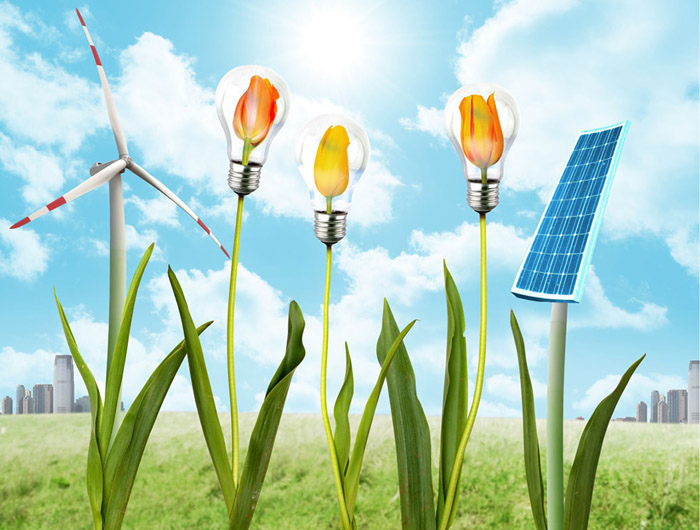June 01, 2013: At the government, industrial and consumer levels, there is rising awareness about depleting resources, lack of reliability and sustainability in the energy sector.
“There is a growing need to manage the ever-increasing demand and peak loads in India. Load management, smart substations for medium voltage (MV) and low voltage (LV), local network reconfiguration and non-critical load shedding are some of the techniques that help us towards this end. It is also important to integrate more green energy into our electrical grids. Plus, with the large number of sensitive electronic gadgets being used we also have to make sure that the electricity quality is up to the mark. Disturbances on the network (flickers and harmonics) impact power quality for end-users. A number of harmonic filters and automatic fault detection schemes exist that help improve the power quality. Maintaining and upgrading aging electrical assets is also a prime concern,” says Dr Satish Kumar, energy efficiency ambassador and vice president, Schneider Electric India.

Understandably, a lot of new technologies are coming up to resolve these issues. On one end, there are alternative energy sources, especially solar. Then, there are smart grids and smart metering technologies that enable efficient consolidation and distribution of power. This is followed by building automation and energy management solutions, smart power outlets, energy-efficient air-conditioners and heaters, and a range of other ‘smart’ equipment that help monitor, manage and optimise the power consumption in homes, offices and industries.
Behind all this, there is a layer of supporting infrastructure, such as a high-speed and high-reliability communication network, and components such as capacitors, inductors and harmonic filters, insulation monitors, MV switchboards and switchgears, sensors, wireless transceivers, low-power microcontrollers, etc.
On a more integrated plane, there are solutions for building automation and energy management, tools to track carbon footprint of operations, network management technologies for utility providers, maintenance solutions that prevent electrical systems from deteriorating and becoming obsolete, and Cloud-based solutions that assist in better automation and connectivity across segments such as electric utilities, water and waste water, oil and gas, and mining and minerals.
Energy-related products are in focus for companies across the spectrum of technology. Schneider Electric, for example, has a vast product portfolio of interesting products catering to various markets—Wiser for home automation, Telvent for infrastructure management, Ecofit, Exostruxure and StruXureware for energy monitoring and control, etc. Semiconductor manufacturers like TI and STMicroelectronics offer wireless transceivers, microcontrollers, development platforms and more. Test and measurement leaders like National Instruments have a variety of design, testing and development tools for this space. Solar specialists like Racold Thermo are also innovating at a rapid pace to cater to the rising demand for renewable energy options.
It is obvious that there is endless innovation and new product development happening in this space. Although the extent of adoption of such technologies is comparatively low in India, it is slowly but surely on the rise here too. Sitting on the tip of the iceberg, this is probably the ideal time for us to delve into some of the prominent technological trends in the energy sector.
Smarter energy management
One of the changes that have taken over the energy sector is the use of energy

by Schneider Electric
management systems by large residential complexes, hospitals, offices, hotels, industries and even individual homes.
“Technological innovations in processors, networking and wireless technologies are enabling this sector to make tremendous strides in making energy management smarter,” says Satish Mohanram, technical marketing manager, National Instruments India. He cites some examples:
Smart metering. Fitted at the consumer end, these meters can measure and control loads based on the availability of power. It also helps in controlling power thefts.
Smart networks. Wide-area networks with high-speed measurement capabilities like phasor measurement help predict grid instability and hence avoid blackouts.
Data mining. High-end servers perform data mining to understand consumption patterns to effectively control generation and load scheduling. This also helps in minimising transmission losses by optimising transmission routes.
More power. Integration of renewable energy sources, better battery technology to store energy, and efficient inverters help make up for the shortage of generated power.
Predictive maintenance. Smart switches, condition monitoring systems, etc, increase the life of power generation and transmission lines through predictive maintenance.
Smart chiller management systems. These save energy by operating during off peak hours and reducing consumption during peak industrial demand.
In India, due to the shortage of power, most of these innovations are very relevant. There is a decent level of awareness about the same and hence these innovations are catching up. “The Smart Grid implementation as a part of the R-APDRP project is a big step in India in this direction,” says Mohanram.








